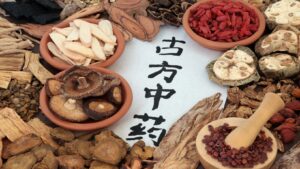Delve into the world of ancient Mesopotamia, where the roots of modern medicine lie. This cradle of civilization wasn’t just home to innovative architectural feats and written language, but also to a rich medical heritage that’s still influencing the healthcare sector today.
Explore the fascinating practices of Mesopotamian healers, their understanding of diseases, and the remedies they concocted. From using plants and minerals for treatments, to their belief in supernatural causes, Mesopotamian medicine offers a unique blend of science and mysticism.
This article will transport you back in time, shedding light on the intriguing mysteries of ancient Mesopotamian medicine and healing. It’s a journey that promises to be as enlightening as it is captivating. So, get ready to uncover the secrets of one of the world’s oldest civilizations.
Ancient Mesopotamian Medicine And Healing
Shifting the lens to Mesopotamian medicine and healing, we delve into a world that perfectly combines science with spirituality. Ancient Mesopotamians possessed an in-depth understanding of the body, disease, and treatment, laying the foundation for modern medical practices.
The Sumerians and the Beginnings of Recorded Healing
 The Sumerians, a Mesopotamian civilization, take credit for the earliest documentation of healing practices. Healing in Sumerian society was a central duty, often performed by clergymen, indicating the spiritual undertone attached to it.
The Sumerians, a Mesopotamian civilization, take credit for the earliest documentation of healing practices. Healing in Sumerian society was a central duty, often performed by clergymen, indicating the spiritual undertone attached to it.
Hieroglyphic documentation from the period translates to the mention of various diseases, herbs, and medical procedures. Records show references of healers using different forms of treatment like poultices and balms made from plants, and even methods involving minerals and metal materials. For example, medicinal use of plants like thyme and cumin was common.
Interplay of Magic and Medicine
 In the cultural context of ancient Mesopotamia, one cannot overlook the integral role of magic in medicinal practices. Mesopotamians didn’t separate medicine from the spiritual world; they believed in the causation of diseases by supernatural beings and thus interwove treatments with rituals.
In the cultural context of ancient Mesopotamia, one cannot overlook the integral role of magic in medicinal practices. Mesopotamians didn’t separate medicine from the spiritual world; they believed in the causation of diseases by supernatural beings and thus interwove treatments with rituals.
A typical procedure would involve identifying the causative demon, followed by an elaborate ritual to appease or ward off the spirit— essentially, as much a part of the treatment as medicinal remedies. For instance, healers performed rituals using amulets and incantations to treat disease believed to be caused by malevolent spirits.
It’s clear that the ancient Mesopotamians, driven by the pursuit of science and divinity, significantly shaped the early chapters of human medicine. Their unique blend of medicine and spirituality hints at a holistic approach, perhaps something current medical practices could draw inspiration from.
Key Medical Practices in Mesopotamia
The compelling foundations of Mesopotamian medicine rested on two key areas: the use of herbal remedies and natural substances, and the application of surgical procedures and healing techniques.
Herbal Remedies and Natural Substances
 Mesopotamians extensively used herbal remedies and natural substances in their medical practices. Lupines, onion, garlic, mustard, and henbane stood out among the numerous plants and herbs they utilized. In many instances, they prepared these natural substances into potions and salves to treat various ailments.
Mesopotamians extensively used herbal remedies and natural substances in their medical practices. Lupines, onion, garlic, mustard, and henbane stood out among the numerous plants and herbs they utilized. In many instances, they prepared these natural substances into potions and salves to treat various ailments.
For example, to alleviate internal pain, they might create a concoction from crushed henbane seeds. Joint inflammation could be treated with poultices of cypress and fir. A blend of fig, mustard, and date cut into thirds was used as an effective remedy for coughs.
Surgical Procedures and Healing Techniques
Alongside their expertise in herbal therapy, ancient Mesopotamians exhibited innovativeness in performing surgical procedures and applying healing techniques. Notably, they excelled in treating wounds and fractures. They employed bandages, poultices, and plasters, in addition to conducting rudimentary forms of surgery. The practice of opening skulls, or trephination, was often made to relieve pressure from head injuries.
Furthermore, Mesopotamians applied therapeutic rituals perceived as magical yet intricately tied to medicinal healing. These practices included chanting spells, creating amulets, and performing symbolic acts – all considered instrumental in the healing process. An example is a customary healing technique where they shaped an amulet in the form of the patient’s ailment.
Throughout these medical practices, one can discern a unique blend of scientific observations and spiritual rituals, marking Mesopotamian medicine’s holistic approach.

